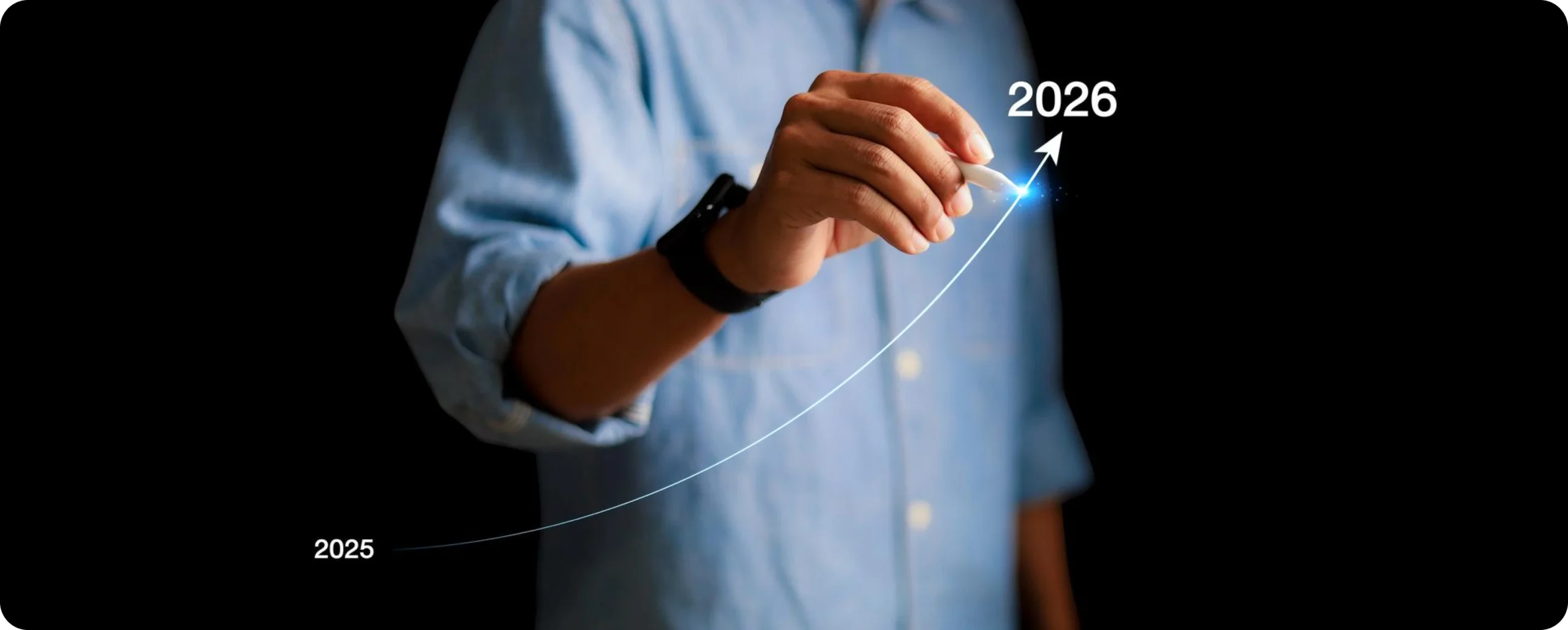What Are Cold Email Benchmarks?
Cold email benchmarks are reference values for key metrics in your outreach funnel. In practical terms, if you send 100 emails, the open rate tells you X people opened it, the reply rate tells you how many replied, and the meeting-booked rate is how many scheduled a call.
Bounce rate (undelivered emails) and unsubscribe rate also factor in. These KPIs show where your process is strong or weak. For example, a 50% open but 0.5% reply means your subject lines are good, but your message or call-to-action needs work. Tracking these metrics lets you diagnose issues (subject line vs. content vs. deliverability).
Methodology & Data Sources
We aggregated data from Smartlead’s 14.3 billion cold-email sends (Jan 2021–Apr 2025) and multiple industry reports. For context, MailerLite’s 2024 analysis of 3.3M email campaigns provides a broad baseline. We filtered our dataset to focus on 1:1 B2B cold campaigns (no mass newsletters), counting each lead once. A “reply” is any human response (even if “not interested”); “positive response” means interest. “Meeting booked” means a demo/call scheduled. We excluded campaigns with obvious spam or external blasts. The result: metrics reflecting real cold outreach success (or shortfalls).
Global 2025 Benchmarks
(All Industries)
Across all industries, our cold-email funnel averages:
- Open Rate: ~42%
- Reply Rate: ~3%
- Positive Response: ~2% (interested replies)
- Meetings Booked: ~1%
- Bounce Rate: ~7.5%
Source: Smartlead.ai
Put simply: out of 100 emails, roughly 40 will open, 3 will reply, ~2 will express interest, and 1 will book a demo. These align with external benchmarks – for example, a Gartner study found ~23.9% cold-email opens and Mailshake reports ~1–4% replies.
LeadLoft emphasizes you must “monitor cold email statistics” carefully. If these metrics slip (say, a 10-point open-rate drop), check subject lines or domain health quickly.
Also note modern tracking quirks: Apple’s privacy changes can inflate “open” counts, so use open rate as a directional metric. Ultimately, focus on replies and booked meetings – those drive the pipeline.
Benchmarks by Industry
Results vary by sector. These are all relatively high compared to the cold-mail average. (By contrast, retail was only ~37.5% and tTravel ~22.6% in 2024.) The table below shows key metrics by industry:
SaaS (Tech/Web)
38%
~3%
~1.5%
~1%
~7.5%
Agencies/Marketing
39%
~3%
~1.5%
~1%
~7.5%
Finance/Banking
43%
~4%
~2%
~1.5%
~7.5%
Healthcare/Med
45%
~3%
~1%
~0.5%
~7.5%
HR Tech (Staffing)
42%
~3%
~1.5%
~1%
~7.5%
Source: Smartlead.ai
For example, Finance tends to get slightly higher reply rates (~4% of opens) than SaaS (~3%). If your niche skews colder, adjust targets down. In any case, use the above as a guidepost for your vertical.
Benchmarks by Team Size / Send Volume
Scale changes everything. Below is a typical range by outbound volume:
Small (<10k/mo)
~50–60%
~5–10%
~3–5%
Medium (10–100k)
~40–50%
~3–5%
~5–7%
Large (>100k)
~30–40%
~1–3%
~6–8%
These differences come down to personalization and list quality. Smaller teams often hyper-segment and hand-craft emails, yielding top-end results: we’ve seen some under-10k senders hit ~60% opens and ~8–10% replies.
By contrast, an enterprise blasting 200k+ will commonly see 30–40% opens and only ~1–3% replies. Bounce rates also climb: small blasts (warmed domains, clean lists) might only bounce ~3%, while large campaigns can hit ~8%. Breakcold’s 2025 guide notes 40–60% as an average open rate, so our small-team numbers are exceptional and large-team figures are closer to the norm.
In practice, small teams often get to use a single warmed-up mailbox (boosting delivery), whereas large teams need multiple domains/IPs to maintain ~6–8% bounces. The lesson: as you grow volume, double down on personalization and domain hygiene to defend your metrics.
Manual vs AI Outreach
AI-driven outreach greatly outperforms manual blasting. Automating personalization pays off. For example, Smartlead campaigns typically see open rates ~18 percentage points higher and ~2.7× higher reply rates than undifferentiated sends. Festi reports one client tripled replies and cut 85% of manual outreach time using AI workflows.
In practice, that means one full-service or fractional sales development representative (SDR) using AI tools can do the work of several reps: more emails sent, more responses, and less time per lead. Even Mailshake concedes manual cadences get only ~1–4% replies, so AI is a game-changer.
For a concrete jump, one user went from 5 booked meetings/month to 15 by switching to automated, personalized sequences. In short, AI doesn’t replace strategy – it scales it. An SDR empowered with AI can reach 3× more prospects with tailored messages than they could by hand.
Deliverability & Warm-Up Impact
Good deliverability underpins all these rates. Mailgun warns that without warm-up, cold domains get flagged as spam. So new accounts should “start slow” – e.g., sending just 10–20 emails/day first – and gradually ramp up volume. Always authenticate (SPF/DKIM) and scrub your lists.
These steps keep our campaigns at only ~7.5% bounce; unchecked email lists can easily hit 20–30% bounce. In practice, think holistically: ISPs judge senders by recipient engagement (opens, clicks, replies). Tools like Smartlead simulate real user actions (auto-opening test emails, sending replies) to build reputation.
Avoid spammy triggers: use genuine content, valid links, and even a few emojis (which can boost opens) instead of keyword stuffing. The result is consistently high inbox placement.
How to Use These Benchmarks
- Set targets, then beat them: Use these benchmarks as your minimum standards. If your open/reply rates fall below them, focus your improvements (better subject lines, cleaner targets, etc.).
- Experiment relentlessly: A/B test subject lines, copy, and send times. Small changes (like word choice or an emoji) can move the needle. Always measure results against these goals.
- Align strategy and pay: Make sure sales quotas and incentives reflect realistic cold-email outcomes (e.g. demo rate ~1%). Translate metric lifts into pipeline value – even +1% reply can mean dozens more meetings over time.
- Measure & iterate: Track your own metrics versus these benchmarks every campaign. Tweak messaging, targeting, or frequency constantly. The goal is to outdo last quarter’s results.
- Continuous improvement: Use dedicated analytics tools to compare open/reply trends over time. Treat these stats as guideposts – the aim is to continually nudge the numbers up. Even small percentage gains (e.g. +1% reply) can multiply meetings at scale.

Cold Email Campaigns Frequently Asked Questions
What’s a good cold email open rate?
It depends, but for B2B outreach ~40–50% is excellent. Any open rate above 30% is decent. Below 20% usually indicates subject lines or list problems.
How about reply rates?
Cold emails commonly get ~1–4% replies. If you’re hitting 5% or more, you’re ahead of the pack. Many teams average ~3%.
Do emojis in subject lines help or hurt?
A small 2019 study found no clear effect. They can make your subject stand out, but test carefully. The data suggest they’re neither a magic bullet nor a poison.
Will AI-generated content trigger spam filters?
Not inherently. Spam filters flag poor hygiene and suspicious keywords. AI can actually improve deliverability by crafting more natural, varied text. Just ensure your domain is warmed up and you have good list quality.
How many follow-ups should I send?
Very often, multiple follow-ups are needed. One analysis showed ~80% of sales require 5+ touchpoints. Never stop after one email if there’s no response – four to five attempts is typical for cold outbound.
How do these benchmarks translate to pipeline?
Use an ROI calculator: e.g., improving reply rate from 3% to 4% on a 1,000-send campaign yields 10 extra replies – potentially 1–2 extra meetings and revenue. Benchmark targets help forecast growth and justify tools or headcount to hit goals.
Key Takeaways
- Data-driven targets:
Base your campaign benchmarks on these numbers, not guesswork. - Personalize & sanitize:
Tailor each email and keep lists clean – those actions give the biggest lift. - Test & optimize:
A/B test subjects, send times, content constantly – small tweaks add up. - Think ROI:
Even a +1% reply-rate bump can multiply your pipeline value.







